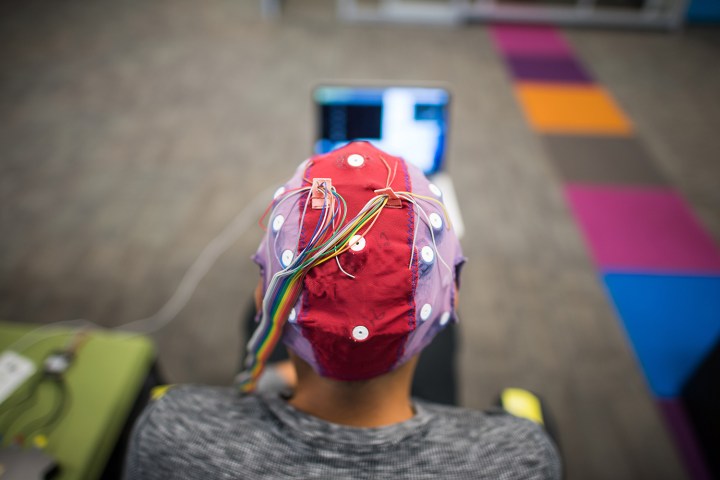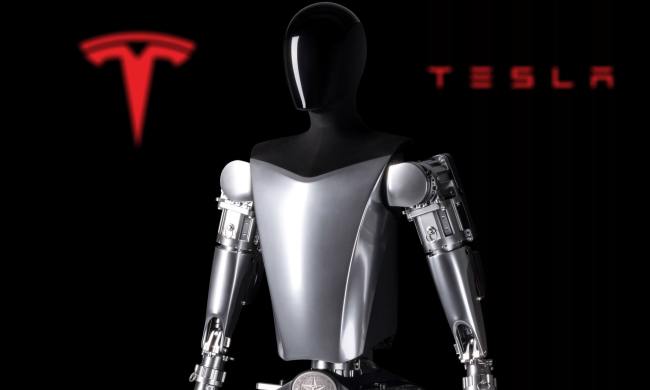
Modius is a neurostimulation wearable that tricks your body into burning fat

Wear this headset for 45 minutes a day, and you could hack your body into burning more fat, resulting in a leaner, meaner look. No, it’s not a “miracle” cure ad for the terminally podgy, but the pitch for the Neurovalens Modius, a neurostimulation device that sounds almost too good to be true. For less time that one would normally spend in the gym, this piece of tech fools your body into thinking it’s exercising, and decreases appetite, all to help you achieve those hard-to-reach weight-loss goals without much effort.
Suspend your disbelief for a second. Here’s how it works. The Modius is a headset worn like a pair of headphones, just without the cups over your ears. Instead, two pads sit just beneath your ears and zap low-power electrical impulses to your vestibular nerve, activating the hypothalamus. Neurovalens says this fools the body into thinking you’re a physically active person, even though you’re on the couch binging on some Netflix.
Read: Modius is a neurostimulation wearable that tricks your body into burning fat
Man responsible for strong password requirements regrets his 2003 guidelines

The man responsible for your requirement to use a combination of lower-case letters, upper-case letters, numbers, and symbols in passwords at least eight characters long is now regretting his advice. Former National Institute of Standards and Technology manager Bill Burr recently admitted in an interview with The Wall Street Journal that his 2003 document about crafting strong passwords and changing them every 90 days was somewhat off the mark.
At the time, he said that users will choose an easily remembered, easily guessed password, and likely one stemming from a batch of “a few thousand commonly chosen passwords.” In turn, hackers trying to gain access to user accounts, computers, and so on would try the most likely chosen passwords first. But even though services would reject specific passwords given their common use, Burr suggested a more secure alternative.
Read: Man responsible for strong password requirements regrets his 2003 guidelines
Trying trippy tech beneath the experimental domes of The Lab

Last year, Goldenvoice, organizers of the popular Coachella festival, installed a huge dome full of tech experiences at the inaugural Panorama Music Festival in New York City. The Lab, as it was known, blew people away. This year it’s back, and three times larger than before.
It’s also more immersive, as artists were required to increase interconnectivity, according to Justin Bolognino, founder and CEO of META — the company that curated the artists featured in The Lab. “Eight people, minimum, had to be able to interact with an installation at the same time,” he told Digital Trends.
We stepped inside The Lab, explored its exhibits, and spoke with the lucky fans who experienced it alongside us. Here’s what we saw, heard, and yes, smelled.
Read: Trying trippy tech beneath the experimental domes of The Lab
Police photo shows maniac driver using a phone in each hand at 60mph

Driving while holding and using a mobile phone is dangerous, stupid, and in the vast majority of places, illegal. However, people still do it, and in the U.K. a particularly keen phone user was caught on camera using not one, but two phones while driving. He wasn’t juggling one phone with the other, but was holding a device in each hand, leaving no hands available for steering the car. He was also traveling at 60 mph.
It’s hard to believe someone would do something so dangerous, but the news comes from a very reliable source — the local police force that caught the maniac driver. Surrey Police posted a photo on its Twitter account, taken with a police camera through the driver’s side window of the vehicle.
Read: Police photo shows maniac driver using a phone in each hand at 60mph
Put down the controllers! Players navigate this VR game using only their minds

From allowing people to pilot drones using only their mind to medical applications involving the control of smart prostheses, the ability to use brain activity to directly control technology is a field that’s advanced significantly in recent years. At the recent 2017 SIGGRAPH conference, tech company Neurable and VR graphics company Estudiofuture teamed up to show off something new: brain-controlled virtual reality.
In a tech demo, the companies demonstrated how a VR game created by Estudiofuture could be intuitively controlled by swapping out the regular hand controls from an HTC Vive headset for technology developed by Neurable; tech that monitors a user’s brain activity to determine their intent.
Read: Put down the controllers! Players navigate this VR game using only their minds
Meet TIKAD: the gun-toting drone that can aim, fire, and compensate for recoil

Have you ever looked at a drone and thought, “Yeah, that’s kind of neat, but I sure wish it came with some mounted firearms?” If so, you may be interested to hear about the TIKAD: a new drone that’s described by its Florida-based creators Duke Robotics as the “Future Soldier.”
Intended for military deployment, TIKAD is an unmanned aerial vehicle (UAV) designed to replace boots on the ground in some of the toughest warzones on the planet. It weighs 110 pounds (50kg), can fly at an altitude of anywhere from 30 to 1,500 feet and — oh yes — did we mention that it can sport a plethora of semi-automatic weapons, and a 40mm grenade launcher for good measure?
Read: Meet TIKAD: the gun-toting drone that can aim, fire, and compensate for recoil
Thync Relax Pro review

There’s something pleasingly sci-fi about the Thync Relax Pro, just like there was about the original Thync. It’s a wearable in the true sense, in that it fixes directly to your body and doesn’t do anything at all when it’s not. It’s designed to help the stressed relax, the anxious become calm, and the sleepless get more rest, which it does by stimulating nerves in the back of your neck using subtle-but-tingly electrical stimulation. It’s the wearable the crew of the Enterprise might choose, and the stuff of cyberpunk dreams.
Read: Thync Relax Pro review
If you are thinking about buying a Fitbit, these deals make it the perfect time

Amazon is offering discounts on select Fitbit fitness tracker models, and to help you find the best Fitbit for your lifestyle, we created a rundown of the ones on sale. If you’ve been on the hunt for a wearable to accompany you on your workouts, now is a great time to score a deal on a brand-name activity tracker.
Read: If you are thinking about buying a Fitbit, these deals make it the perfect time
Facebook mounts assault on Netflix and Amazon with new ‘Watch’ platform

Facebook is revamping the way its users view video on its social network, beginning with the launch of a new platform called Watch. The move, which will bring with it a growing amount of original content, is part of a grand plan by the social networking giant to better compete with video-streaming rivals such as Netflix, Amazon, and YouTube.
The new platform for Facebook’s mobile, desktop, and television apps will start to show up this week for select users in the U.S. before hitting more locations “soon.”
Watch promises to be a more structured version of the video tab that the company launched last year, and will offer suggestions for new shows based on what your friends and communities are enjoying.
Read: Facebook mounts assault on Netflix and Amazon with new ‘Watch’ platform
T-Mobile Revvl, Revvl T2, and Revvl T3 Pro news and rumors

T-Mobile may be readying an entire self-branded lineup of affordable smartphones, and the first has been revealed. In early May, details of the T-Mobile Revvl, Revvl T2, and Revvl T3 Pro began to surface. The company announced it is officially releasing the first of the lineup — the Revvl — but we have yet to hear about the other models.
TCL-owned Alcatel is designing and producing the Revvl phones, and they are all expected to be cheaper than Apple’s entry-level iPhone (less than $650). They will also launch alongside a commitment-free T-Mobile service that comes with a lifetime warranty and insurance included.
We don’t know much about the entire T-Mobile’s Revvl lineup, but we’re learning more every day. Here is what we have so far.
Read: T-Mobile Revvl, Revvl T2, and Revvl T3 Pro news and rumors


